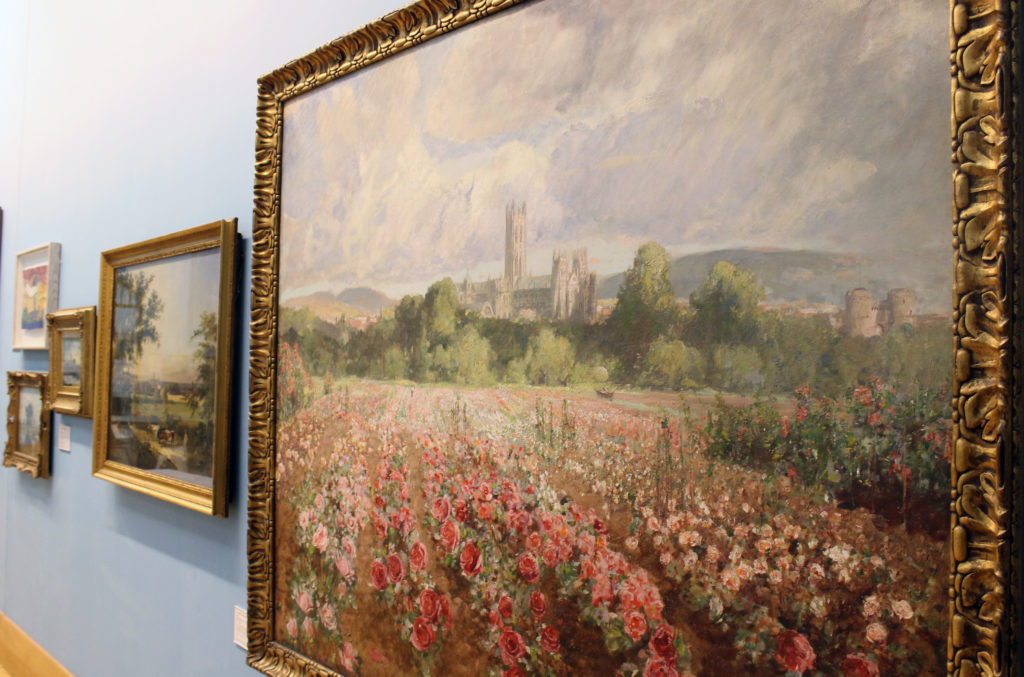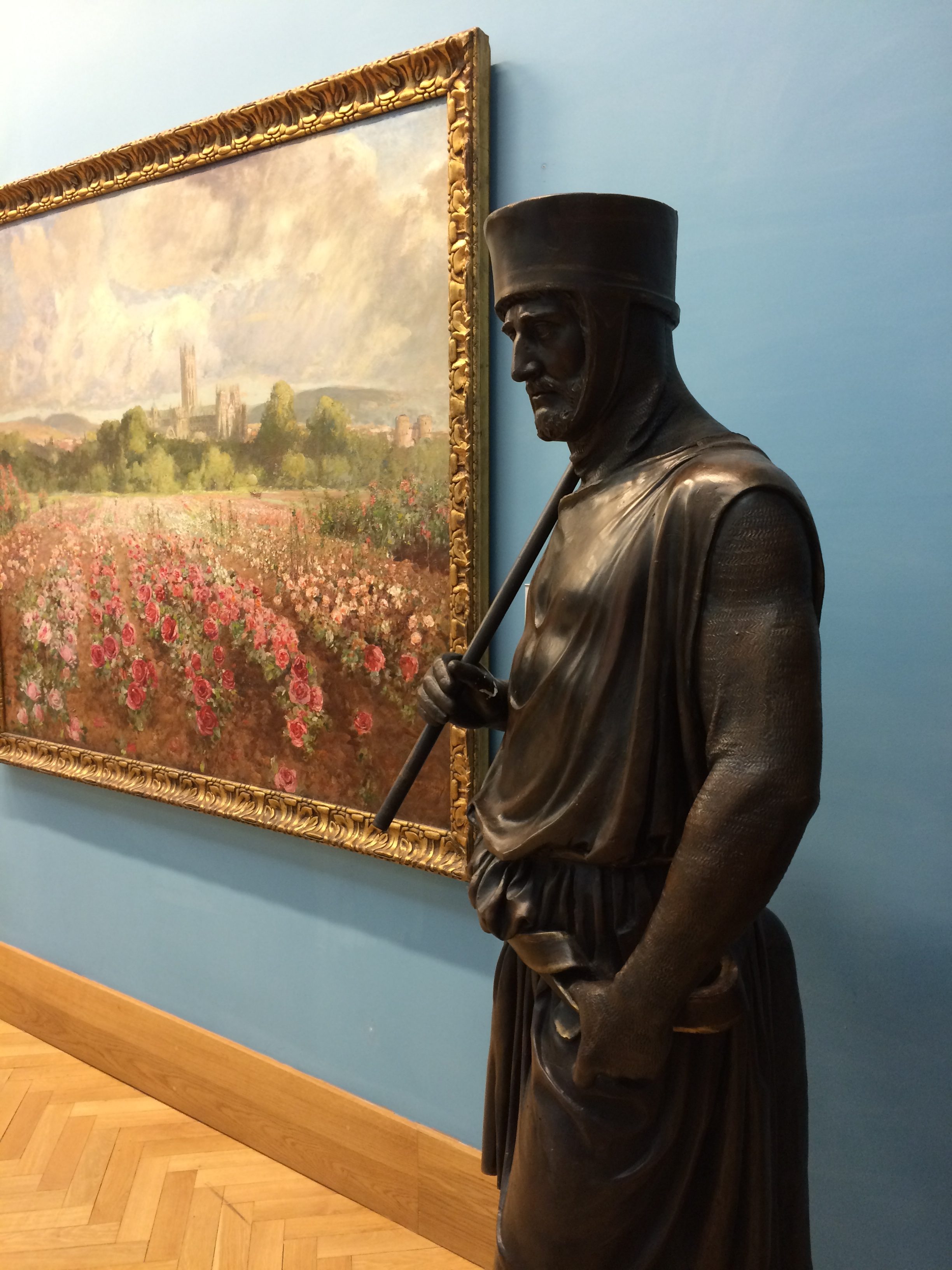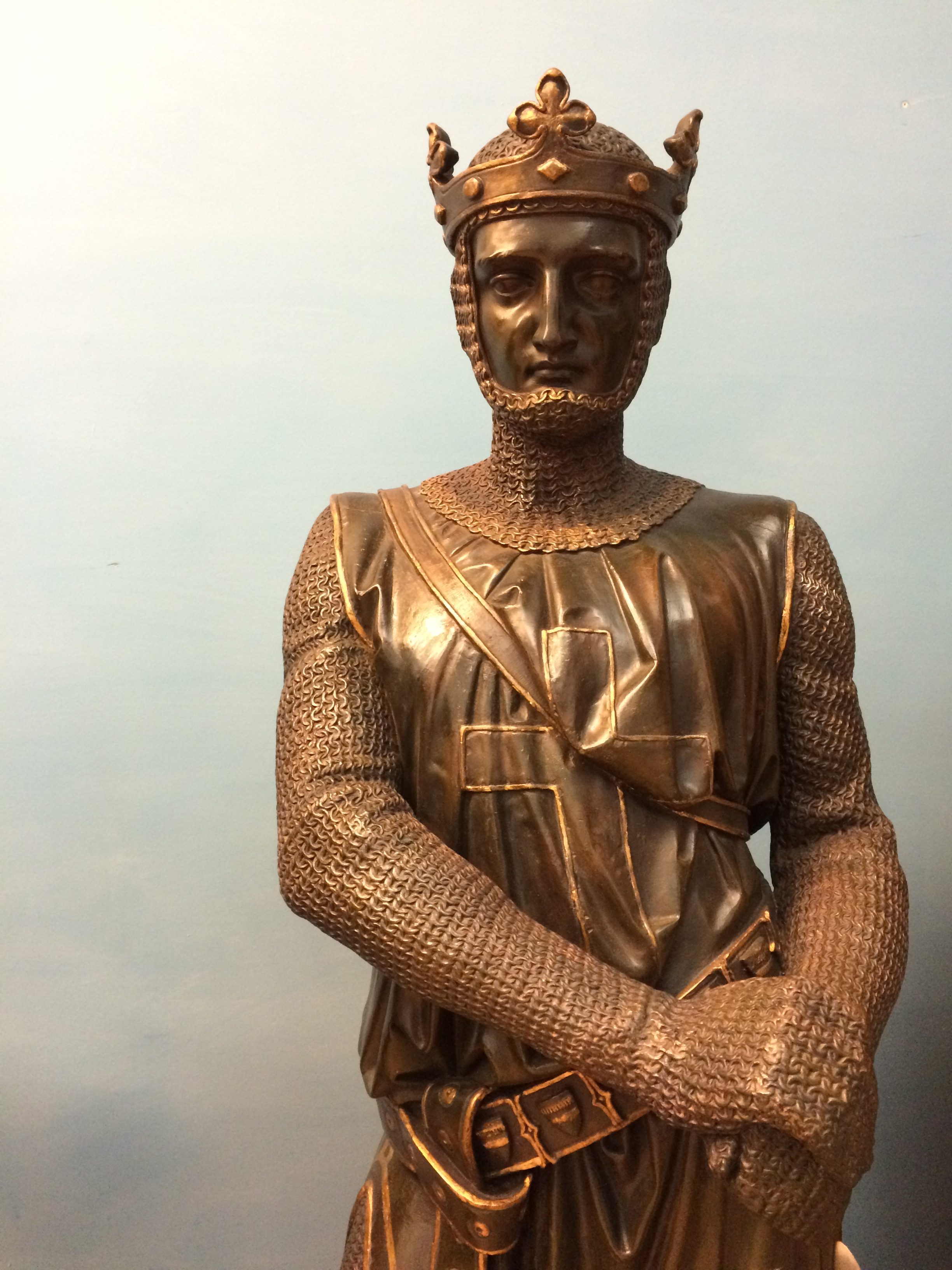
Easter fun at the museums!
Exhibitions, trails and activities; six fun things for all the family to enjoy at The Beaney and...
Ok, so they are actually three Barons who signed Magna Carta, but they certainly look a bit like Knights…well, two out of three.
I find myself in the presence of three life size models of Stephen Langton, Archbishop of Canterbury, by John Thomas, Robert Fitzwalter by Frederick Thrupp and Sieur de Quincy, Earl of Winchester, by James Westmacot. They are interpretations of the barons who signed Magna Carta. The original sculptures have national significance as they were the result of a competition held in the 1800’s. They were to be displayed at the House of Lords, but public access was limited so in response, the models were displayed in the makers’ showrooms. They were then given to Canterbury Museums and Galleries in 1906, where they ended up for a while in darkness somewhere deep in Westgate Towers…
Their expressions speak volumes. Forlorn, knowing, dignified, proud, strong, having signed or perhaps about to sign that historic document…carrying the weight of a nation with them. Sounds familiar? The hopes and dreams of the original barons for the people of England channelled through artists’ responses to the story of Magna Carta. I can research, imagine and dream about these historic figures, and of course I have, but what interests me here is how these artefacts provide a direct link to a specific point in time, yet reflect the layers of history, the changing responses to the event and the barons. They carry the impressions of the artists’ hands, imaginations. It is the journey of these models as talismans of the imagination that intrigues me.
Like a wishing well, these models urge me to dream, to learn, to place myself in their shoes, to take a journey back through their version of the story that inspired their making. They look as though they are here to perform judging by the setting and posture. What are they telling me about the darkness at the Towers? Prisoners of history set free to tell all. Let me get a cup of tea!
All the fears I have about the decision to leave the EU are projected onto these dark knights (yes, I still realise they aren’t knights, but just go with me). I look to them for hope. But this is just a stopping off point along their never ending journey for the Holy Grail, or at least fulfilment of the Magna Carta’s core values, some of which we have directly carried through while others have been lost.
So here we have a prime example, to my mind, of the process I’m investigating, how artefacts can not only tell us about a point in time, through an origin story based on evidence, but how they can also carry contemporary responses which help to sustain them, allow them to grow and remain relevant for each new generation. There is the origin story, an imagining of the original barons, the Victorian artists’ interpretation using the available materials, a restoration, someone arranged them in this way in the corner of the room, the many visitors passing through and taking note, and now me.

I would like to talk to them, share my concerns, find connections, or maybe just stand here for a while and listen to them. Do they have split personalities? Casting a long shadow of their former selves? Do they imagine themselves as the barons they were modelled on? Why am I talking about them as though they were real?
“Hello”
“Hello, I appear to have lost my self”
“Quiet please, we’re playing statues”
“Ah”
“Did you see him move?”
“Well…”
“He did didn’t he?
“It’s hard to say”
“I won! Ha!”

Photo by Barry Amos
I wonder what they might think of who we have become and what we have done to the land we inherited. And what does the future look like? I through a coin at de Quincy’s shoe and make a wish. I’m not given to such things usually, but in for a (hopefully temporarily devalued) penny and all that…
They are vessels to another world. How we view, experience and preserve them is fluid, subjective and imaginative. Glad I could have this moment with them before they set off again on their long road.
This blog has been a bit of a ramble, and rightly so I think because these models, these artefacts are still working their magic on me, working with me to make sense of our current social and political upheavals.
Here’s something a bit more factual if you fancy it:
Magna Carta, meaning ‘The Great Charter’, is one of the most famous documents in the world. Originally issued by King John of England (r.1199-1216) as a practical solution to the political crisis he faced in 1215, Magna Carta established for the first time the principle that everybody, including the king, was subject to the law. Although nearly a third of the text was deleted or substantially rewritten within ten years, and almost all the clauses have been repealed in modern times, Magna Carta remains a cornerstone of the British constitution. Most of the 63 clauses granted by King John dealt with specific grievances relating to his rule. However, buried within them were a number of fundamental values that both challenged the autocracy of the king and proved highly adaptable in future centuries. Most famously, the 39th clause gave all ‘free men’ the right to justice and a fair trial. Some of Magna Carta’s core principles are echoed in the United States Bill of Rights (1791) and in many other constitutional documents around the world, as well as in the Universal Declaration of Human Rights (1948) and the European Convention on Human Rights (1950).
As I look around the room and then out into the street, I see similar expressions on people’s faces: forlorn, knowing, dignified, proud, strong, having signed an historic document, wondering if they have done the right thing. I am forlorn but I know hope will come along soon on our own long road ahead.
These three barons, these fine Knights of the Imagination offer a theatre of narratives in this, the Living Museum.
